Some tourists are looking for buildings with centuries-old history in secluded corners of cities, while others admire modern glass skyscrapers rushing up. It seems that these two universes are simply unable to intersect. In the history of architecture, there are many cases of how a building gradually changes its appearance, and at the same time its functionality. For example, with the decline of interest in religion in some countries, temples and churches are being converted into cultural churches and music schools. The old fire station can turn into an office center. We will talk about some interesting projects in which metamorphosis looks very contrasting.
The Basilica has become a cultural center, Spain, Sanpedor
Franciscan monks founded here in the 18th century a complex with the church of St. Francis. Until 1835 the monastery operated. But by 2000, in fact, only ruins remained from it. Only the church building and part of the perimeter wall reminded of the complex. The roof was badly leaky, and the performances of the choir were out of the question. And some elements of the nave and chapels collapsed altogether.
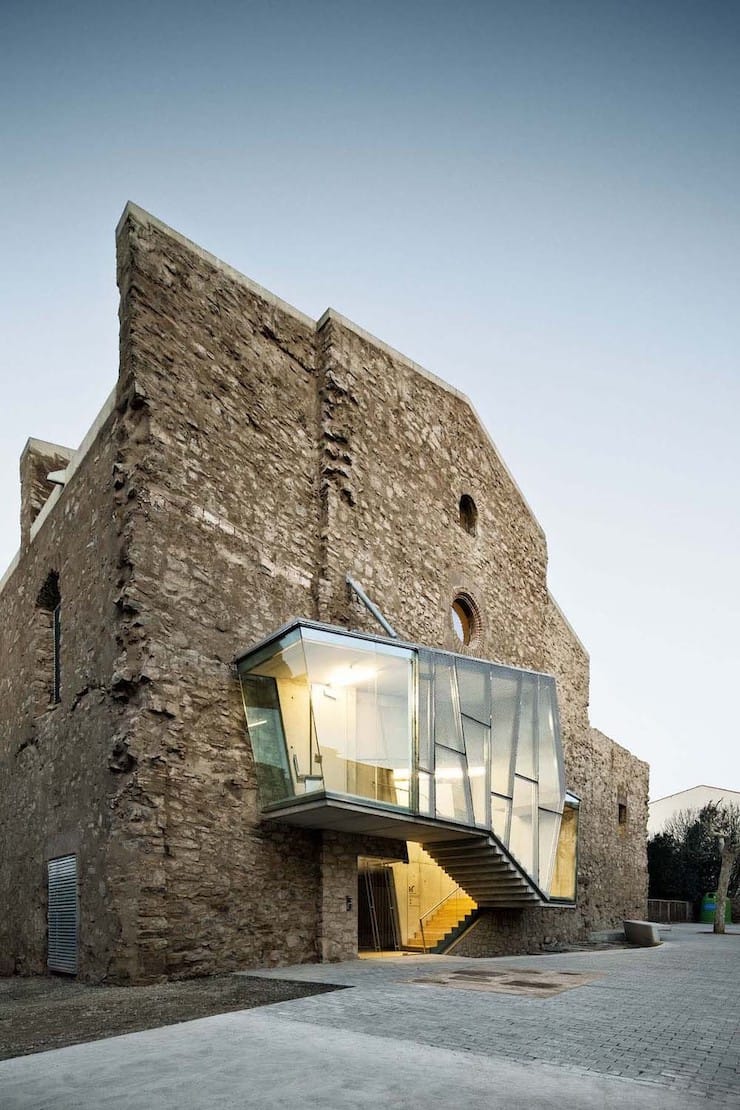
Reconstruction started in 2003. Architect David Klozes spent almost 8 years on the implementation of the bold project. He left the historic part intact, but added smooth concrete surfaces with large windows to the structure. This made it possible to fill the room with natural light. In the most secluded corners of the new cultural center, Closes marked out artificial lighting. So he achieved that there were no dark places left in space. The audience is located in the nave, and the historical archive has ascended under the roof. Inside, a whole system of stairs and ramps has been created that allow visitors to make a circular tour of the interior of the building to view the preserved parts from the best angles.
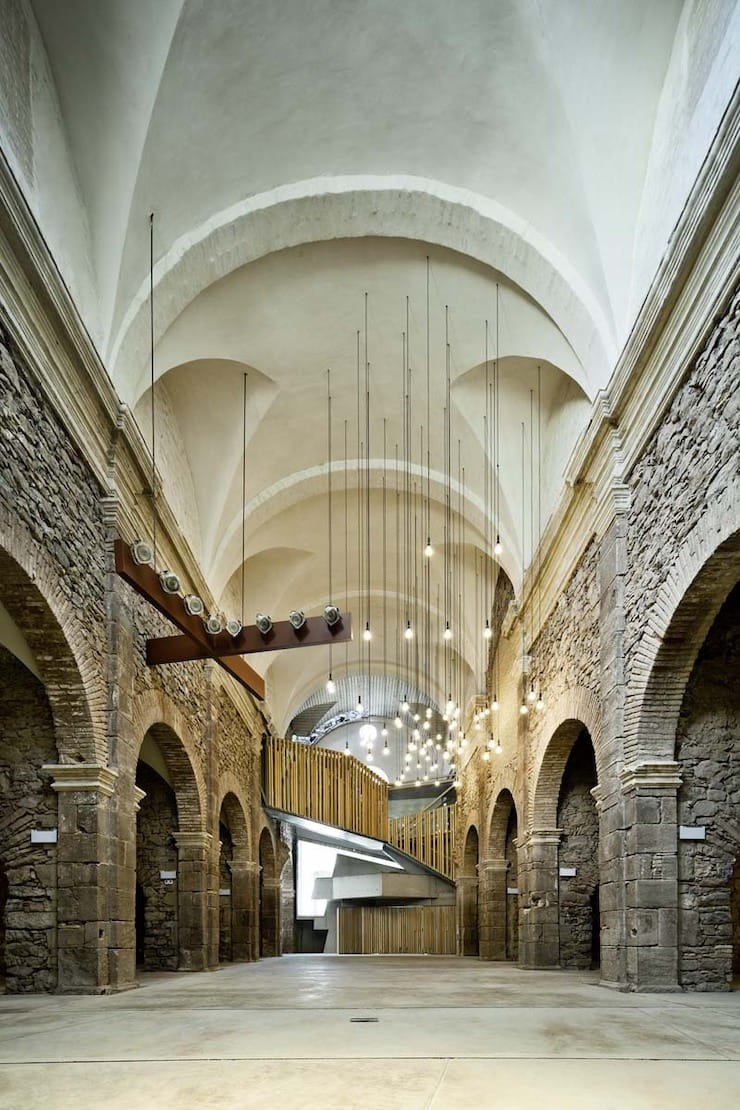
The architect deliberately separated historical and innovative elements from each other as much as possible. At the same time, the church retained its face: it was decided not to cover its old scars with plaster. It was necessary to resort to special construction techniques that made it possible to strengthen the structure, but at the same time preserve signs of its destruction.
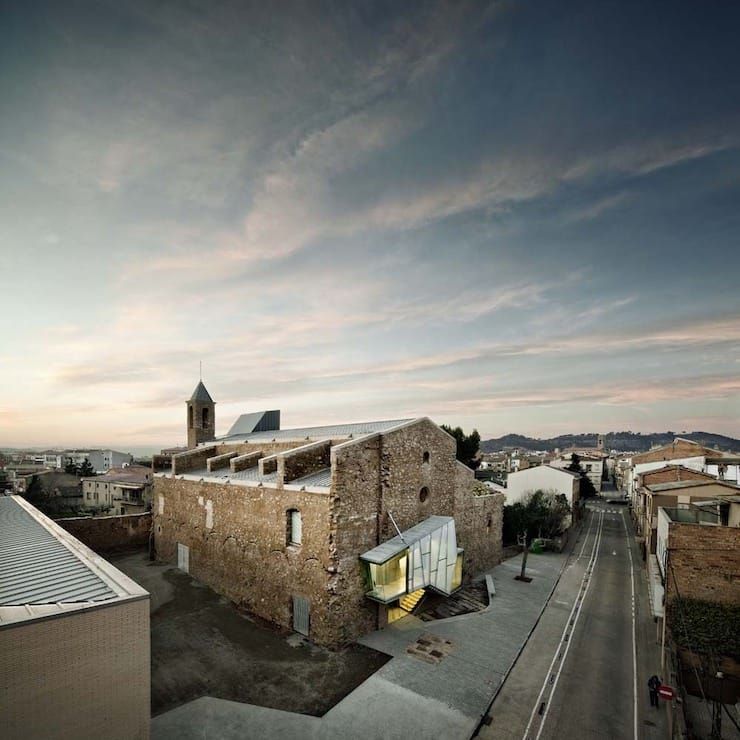
BY TOPIC: Animals and insects, or 30 reasons not to go to Australia.
Carpentry workshop turned into an office center and residential complex, Estonia, Tallinn
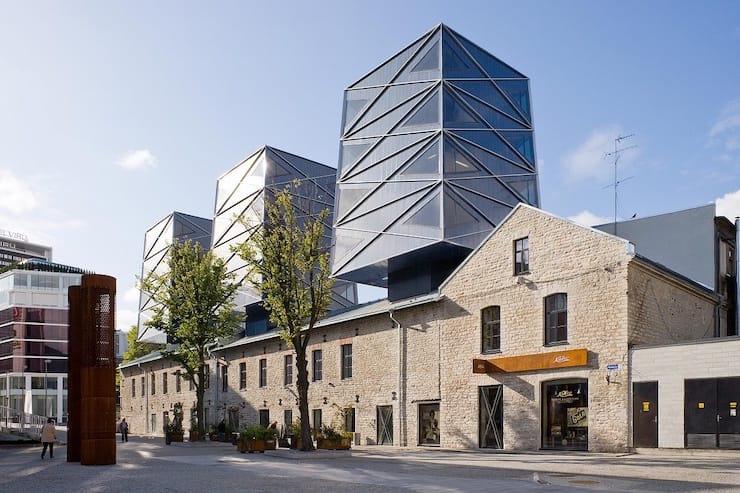
The Rotermann quarter is a competitor to the “old” Tallinn in terms of the concentration of historical buildings. At the end of the 19th century, the carpentry workshop in the trade and factory district was abandoned. And so the building stood forgotten until the end of the 1970s, when Andrei Tarkovsky drew attention to the colorful building. Some scenes of his film “Stalker” were filmed in the workshop.
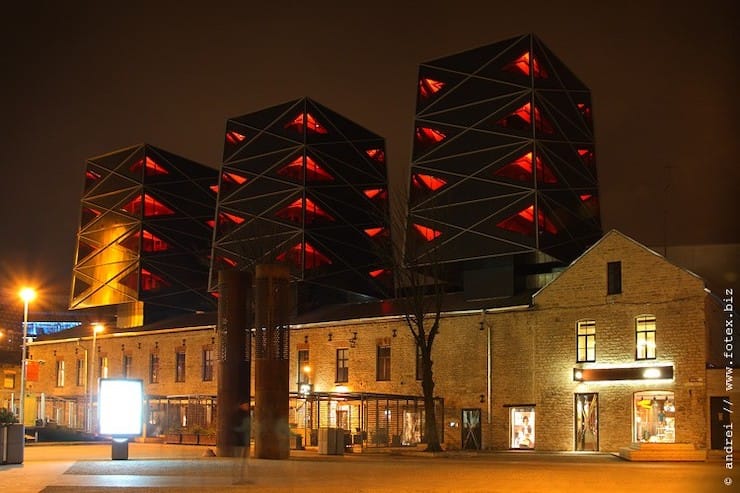
The building stood abandoned until the early 2000s, when the city authorities took it seriously, as well as the entire block. The former factory district has turned into a fashionable place known throughout the Baltics. Creative studios, flagship stores of famous brands are located here, and apartments break records of Estonian real estate prices. The building of the carpentry workshop has become a landmark for the area. Above a low abandoned building, three vertical towers shot up at once. With the help of such an idea and form, the architects wanted to recall the industrial architecture of the beginning of the last century. It seems that the towers rest on the roof of an old building, but in fact, reinforced concrete piles are located at their base. The roof of the old workshop simply could not bear such a load. The project turned out to be so successful and noteworthy that its authors were nominated for the EU Mies van der Rohe Prize for Contemporary Architecture in 2009.
BY TOPIC: Who has the most followers on Instagram – the 40 most popular accounts.
The new building of the old building of the Royal Ontario Museum, Canada, Toronto
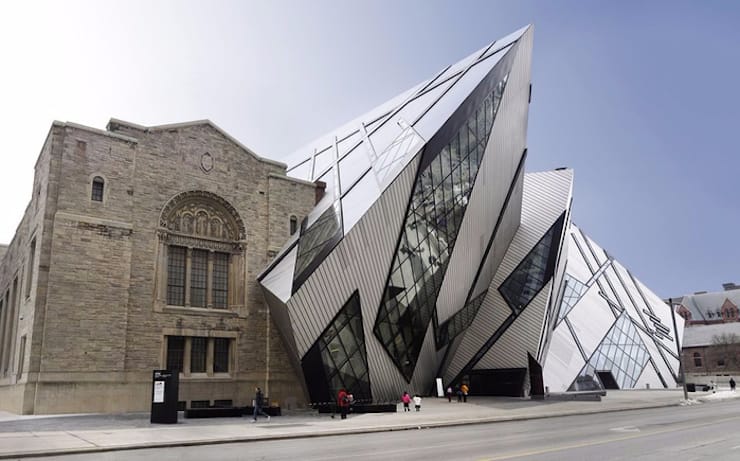
It is no secret that museums are gradually losing their popularity. Faced with this back in the 1990s, the Royal Natural History Museum. Interest at least in the building was aroused by a new building built in the form of a crystal in 2007. This building cost $270 million, but the project was successful. It vividly combines images of historical architecture and modern. The American architect Daniel Libeskind was inspired to create this project in the form of a new building of the museum by mineral crystals seen in the local exposition.
I must say that not everyone liked the unexpected extension. But critics were drowned out by positive reviews about the project. The “crystal” built into the old building made dynamic not only the appearance of the museum itself, but also refreshed the whole street. The shape of the building can be roughly described as five intersecting prisms. Thanks to this, the interior spaces were devoid of right angles, which leaves a lasting impression. And it is no coincidence that the central staircase of the museum is called the “Stairway of Miracles”. It connects all five floors of the building and in itself acts as a kind of gallery with thousands of unique exhibits from various collections.
BY TOPIC: BelAZ-75710: 1,300 liters of fuel per 100 km and other 7 facts about the best dump truck in the world from Belarus.
Turning a paper mill into a distillery, UK, Hampshire
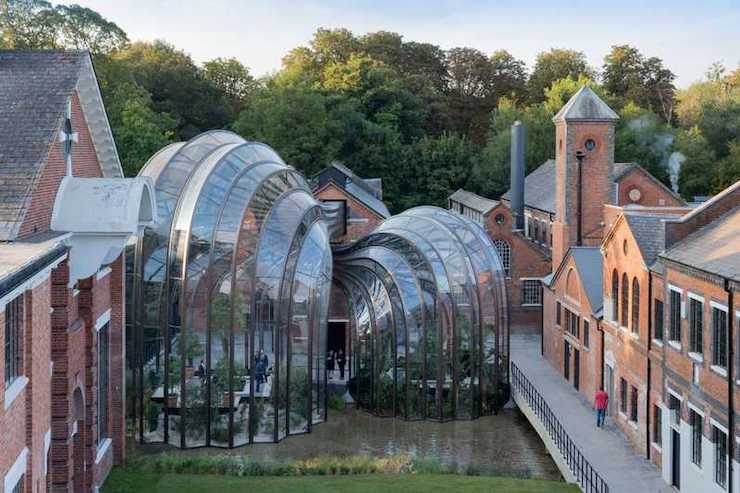
From the beginning of the 18th century to the middle of the 20th century, the Bank of England printed its banknotes at a paper mill located on the banks of the River Test. Over time, the production could no longer perform its functions, and the premises had a new owner. They became the distillery Bombay Sapphire “Laverstock Mill”. The owners treated their heritage with attention. In cooperation with the state agency for the protection of monuments English Heritage, the architectural reconstruction of the site was carried out. Small outbuildings were removed from its territory, the nearest river branches were expanded and deepened three times. Thus, it was possible to create a picturesque landscape around the once industrial object.
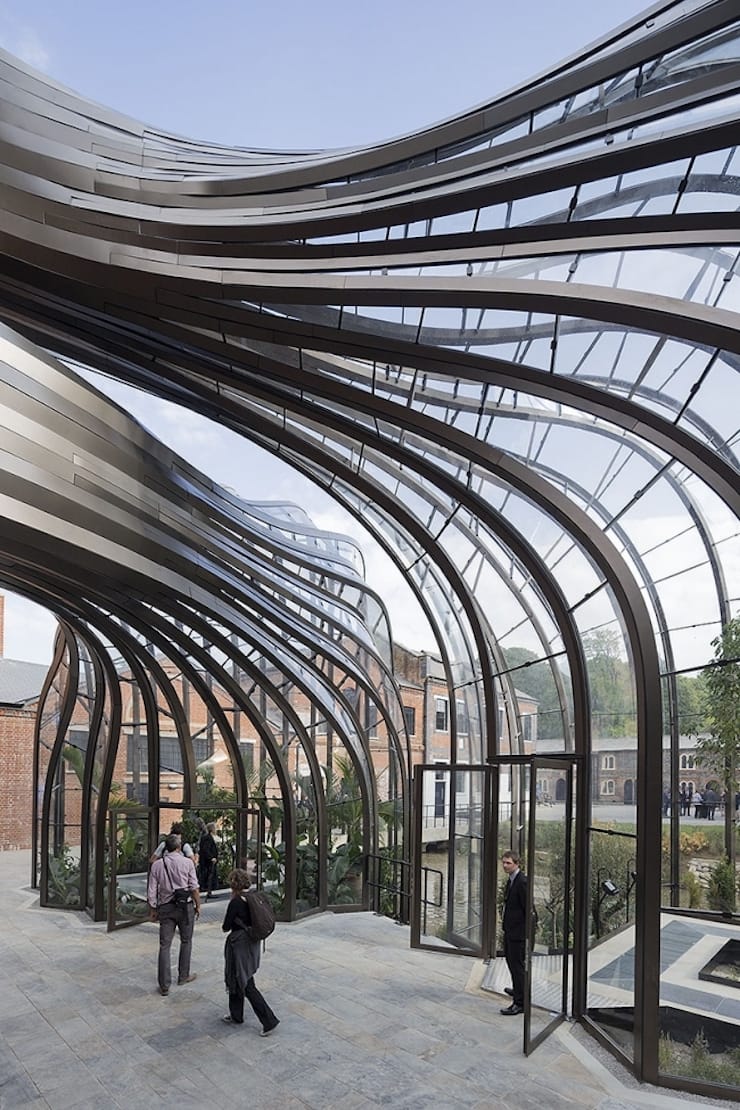
British architect Thomas Heatherwick took into account the fashion for greenhouses in the Victorian era. This prompted him to create a unique cooling system for the production hall with distillation tanks. The structure based on metal beams and glass consists of 10,000 elements. Thanks to it, hot air from the production room is discharged into the greenhouse outside the building, and then through the historic tower to the outside. The warm air and constantly maintained humidity level in the pavilions make it possible to grow tropical and Mediterranean plants there. They are excellent for flavoring gin produced at the distillery.
BY TOPIC: Why is wine dry, or which wines are called dry and which are sweet?
Fire station now serving Port Authority, Belgium, Antwerp
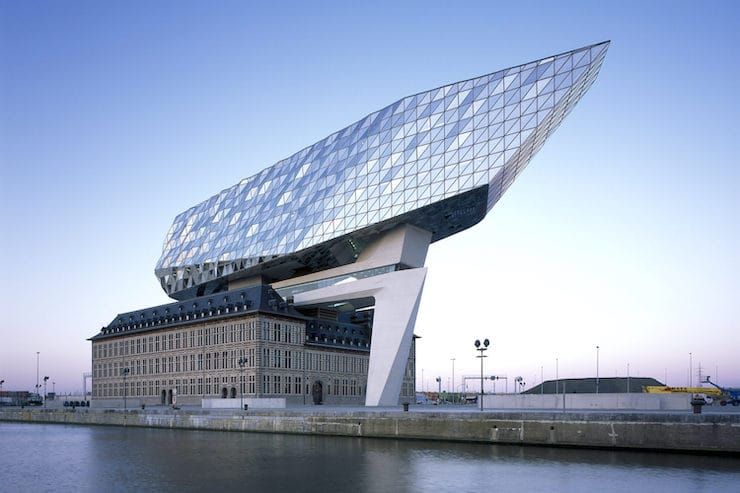
Architectural bureau Zaha Hadid approached the task of forming an administration building for one of the largest ports in Europe in an unconventional way. The basis was the old fire station, which received a superstructure in the shape of a diamond. This decision was not accidental – Antwerp has long been considered the world center for the trade in diamonds and their cutting. The Belgian port was even nicknamed the “Diamond City”. And in memory of the architect and designer who died in 2016, the square in front of the administration was named after her.
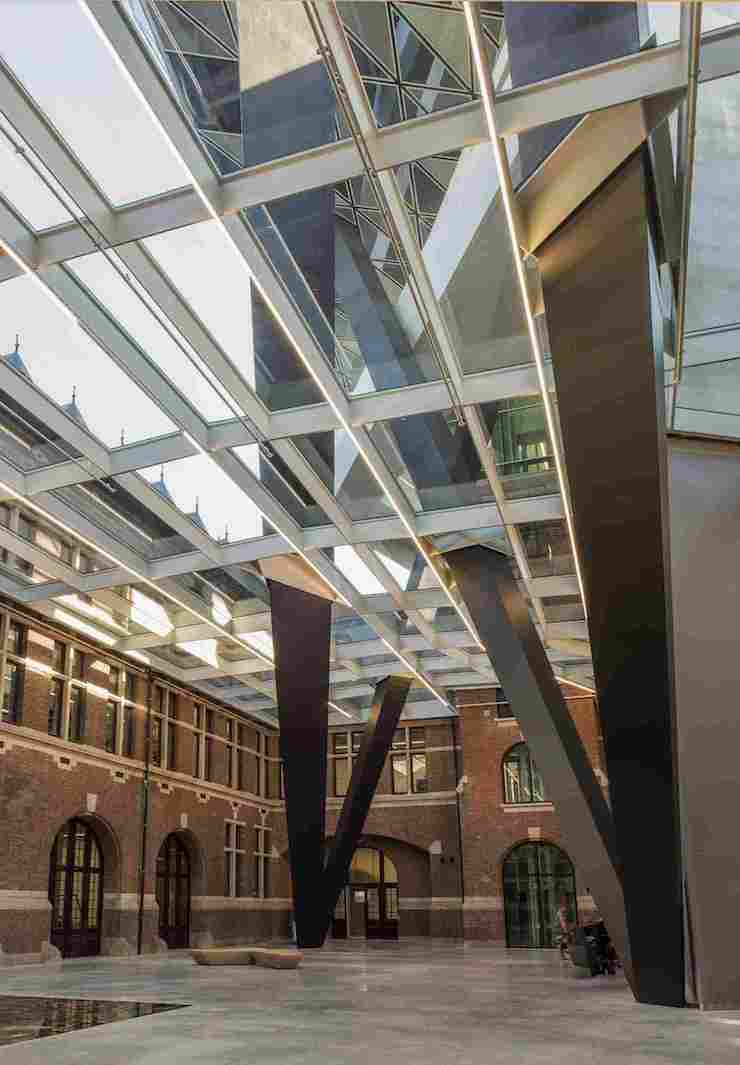
And in the building itself there was a place for a library, conference rooms and restaurants. An observation deck was equipped on its roof. The working space is occupied by open-plan offices that allow employees to change their place of work depending on the tasks: telephone conversations, computer work, business meetings. In this project, energy savings were also thought out. The building is heated and cooled by a special geothermal system. The level of interior lighting is adjusted depending on the time of day. And even in the toilets there were motion sensors on the faucets and urinals that work without water.
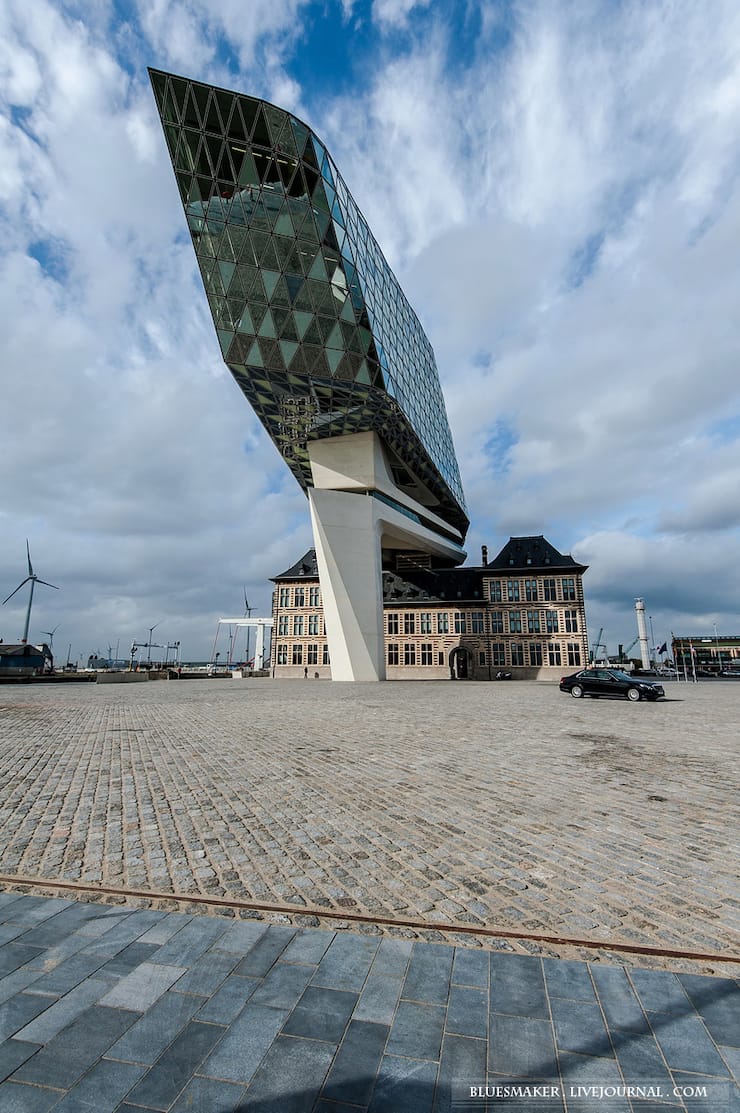
BY TOPIC: Why are red-haired people born and how they differ from the rest.
The monastery opened the doors for a music school, France, Louvier
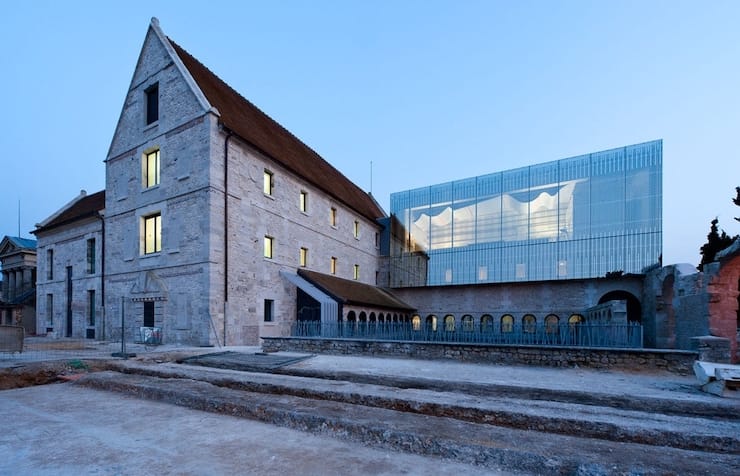
This Franciscan monastery has changed its purpose several times since its construction in the 17th century. During the French Revolution, a prison was located here, and later the walls ensured the safety of the grain stored inside in a warehouse. To XIX century the building was partially destroyed. Our contemporaries gave it a second life – in 1990, the remaining buildings began to be used for a music school.
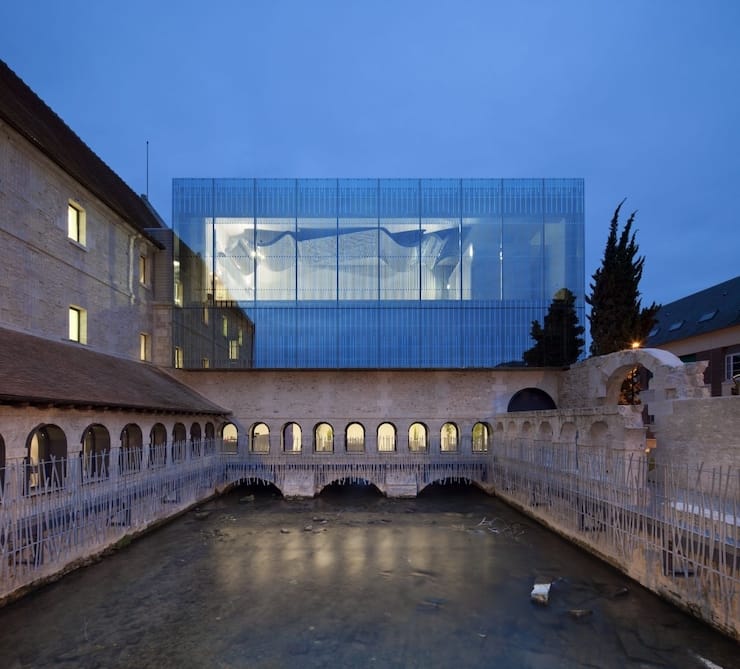
And after 10 years, the inner area was also expanded due to the construction of new buildings. One of them appeared right on the ruins of the south wing. Now, at the junction, the boundary between the new and old building is clearly visible. Architect Bruno Decari, who heads the Paris bureau of Opus 5, proposed to make one of the walls of the rectangular building completely glass. Such a solution allows the surrounding landscape to be reflected in the glasses during the day, and in the evening to view the interior of the concert hall.
BY TOPIC: 35 best optical illusions that have become Internet memes.
Combination of a residential building and a mill, Italy, Chieti
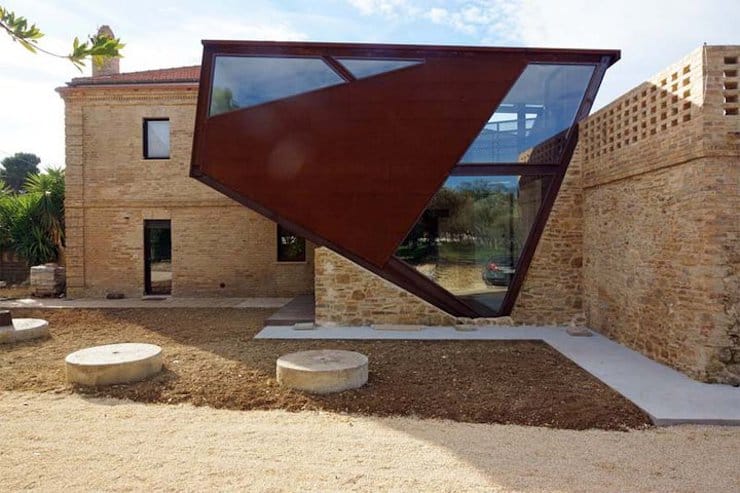
Villas are not always comfortable for living. This small building on the Adriatic Sea was built in the 19th century, but a poor renovation in the mid-1980s damaged the style. Modern development clearly made the buildings of the residential building and the mill for pressing olive oil out of place.
The Italian architect Rocco Valentini got down to business. He cleared the territory of deliberately unnecessary objects and connected together two historical buildings that previously stood separately. Between them is a pavilion made of glass and Corten steel. The architect managed to preserve the historical masonry of the outer walls and the entrance arch. The new space has a hall with a staircase and a dining room with a glass wall through which a view of the courtyard opens. A mahogany bridge connects the two buildings. Valentini was inspired by agricultural implements of the 19th century for such an unusual form of extension. Now the appearance of the new building is perfectly combined with the old tools of labor exhibited as art objects in the courtyard.
See also:
.
The post How to effectively rebuild historical buildings, giving them a modern look: 7 examples appeared first on Gamingsym.
